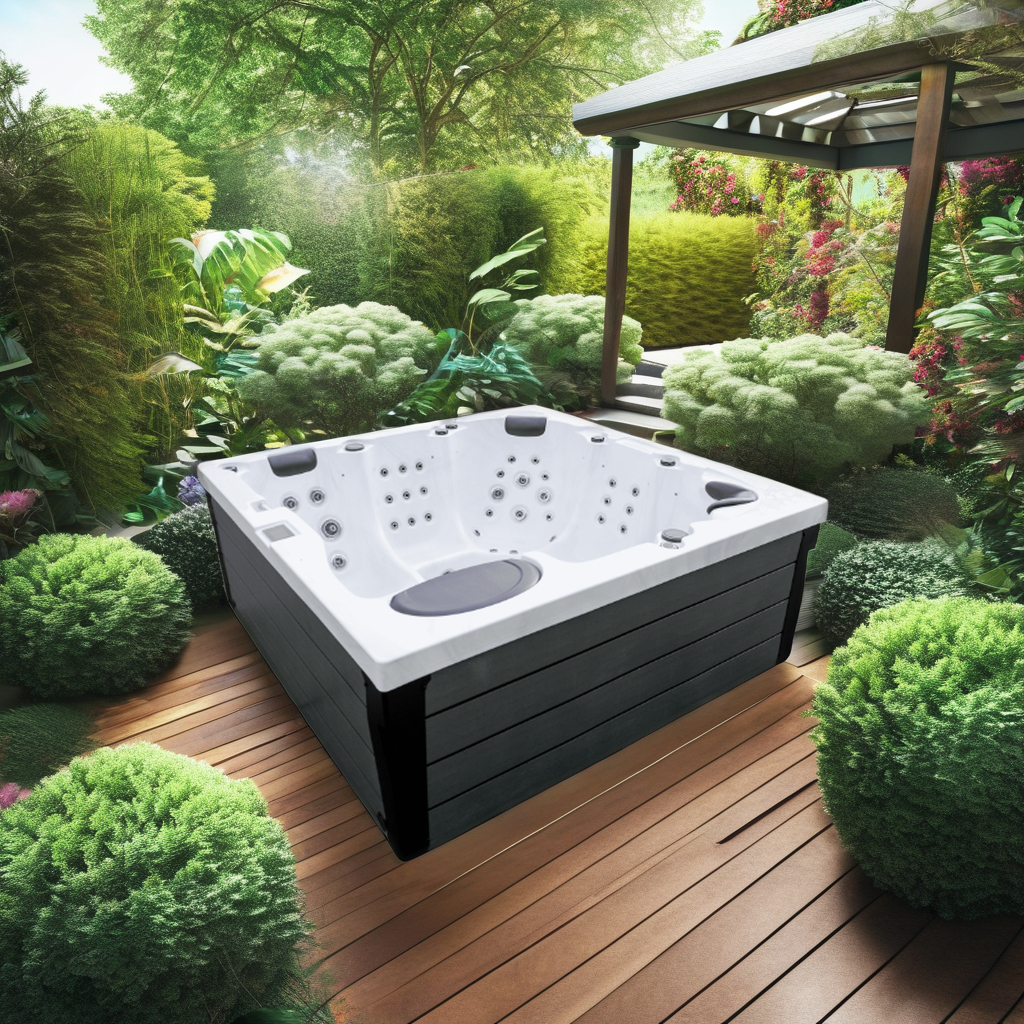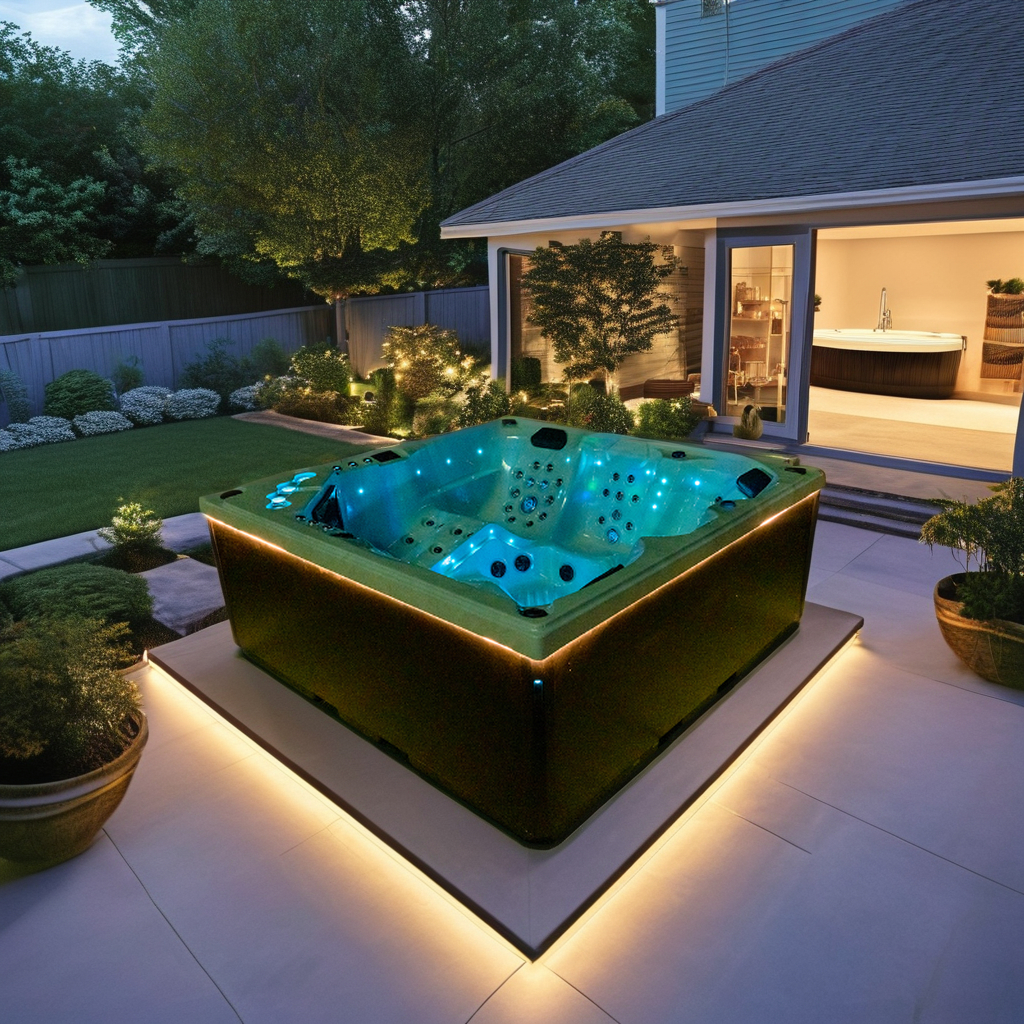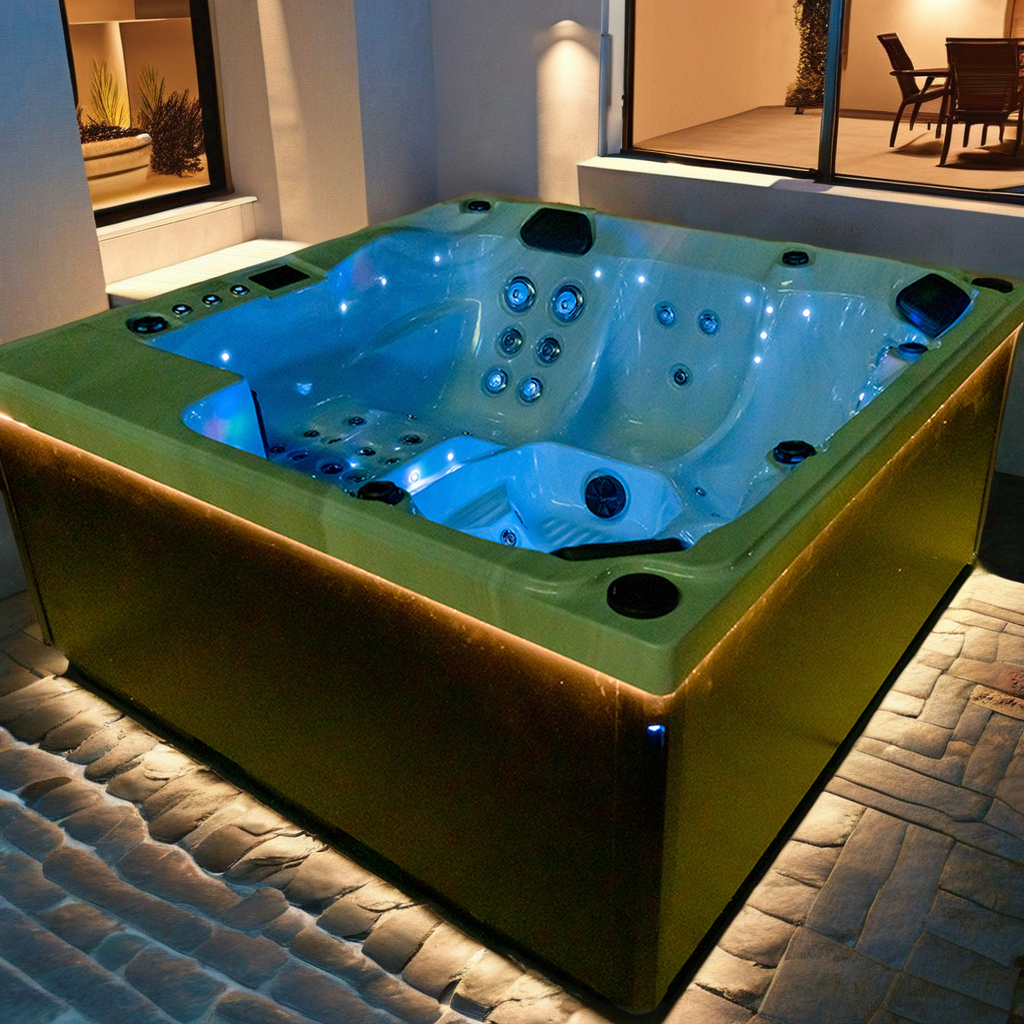
What do you put in your spa jacuzzi bathtub after each use?
2025-10-16 15:30A spa jacuzzi bathtub not only provides a relaxing hydromassage, but also promotes blood circulation and relieves muscle aches. Despite its pleasant user experience, cleaning and disinfecting the bathtub after use is often overlooked, posing a potential health risk.
A question worth pondering is: What do you put in your spa jacuzzi bathtub for disinfection after each use? While this question may seem simple, it actually involves multiple aspects, including water quality safety, bacterial control, and equipment maintenance.
This article will analyze the structural characteristics of spa jacuzzi bathtubs, the necessity of disinfection, common sources of contamination, types of disinfectants, usage methods, and precautions. It aims to help users develop a scientific, systematic, and effective disinfection awareness and operational procedures.

Why is the internal structure of a spa jacuzzi bathtub more susceptible to bacterial growth?
To answer the question of "what should be put in for disinfection," we must first understand the fundamental differences between spa jacuzzi bathtubs and ordinary bathtubs. Spa jacuzzi bathtubs are typically made of acrylic or fiberglass and feature complex internal systems such as pumps, circulation piping, jet nozzles, and air bubble devices. While these components enhance the user experience, they also increase the potential for microbial growth for the following reasons:
1. Complex piping structures facilitate water accumulation
The circulation piping within spa jacuzzi bathtubs is often crisscrossed and coiled. Even after drainage is complete, water may remain in some sections of the pipes or within the pump, creating a breeding ground for bacteria and fungi.
2. Moderate water temperature, ideal for microbial growth
The water temperature in spa jacuzzi bathtubs is typically maintained between 34°C and 40°C, a temperature range ideal for the growth of most bacteria (such as Pseudomonas aeruginosa) and fungi.
3. Organic matter introduced by users
Before entering a spa jacuzzi bathtub, a person's skin is often covered in sweat, oil, dandruff, and makeup residue. These substances are released by the high-temperature water and accumulate in the water, providing nutrients for microorganisms. Therefore, if a spa jacuzzi bathtub is not thoroughly disinfected regularly, its interior will quickly become a breeding ground for bacteria and dirt, not only compromising hygiene but also potentially posing a threat to skin and respiratory health.

Why is disinfection necessary after every use?
Many users misunderstand that as long as a spa jacuzzi bathtub appears clean, it doesn't need frequent disinfection. This is a completely wrong idea. Invisible bacteria are far more threatening than visible dirt, and the internal structure of a spa jacuzzi bathtub necessitates frequent disinfection and maintenance.
1. Preventing Rapid Microbial Growth
After a spa jacuzzi bathtub is used once, even after draining the water, water stains and organic residue may remain inside the pipes and showerhead. If not immediately treated with disinfectant, bacteria will begin to multiply within hours, reaching dangerous levels within 24 hours.
2. Maintaining the Effectiveness of Spa Functions
The jet system is one of the core functions of a spa jacuzzi bathtub. Once biofilm forms inside, it can not only clog the pipes and affect water flow efficiency, but also weaken the massage effect and even damage the pump.
3. Reducing the Risk of Cross-Infection
If a spa jacuzzi bathtub is shared by multiple people (such as in a home or club), each user may carry different types of microorganisms. Regular disinfection can effectively prevent transmission and ensure the health and safety of subsequent users.
Therefore, disinfecting the bathtub immediately after each use is one of the most important hygiene steps in spa jacuzzi bathtub use.

Types of Disinfectants Suitable for Spa Jacuzzi Bathtubs
To answer the question of "what to put in for disinfection," it's important to understand the chemical tolerances of different spa jacuzzi bathtub components. The following describes several mainstream disinfectants, their mechanisms of action, and their suitability.
1. Chlorine-Based Disinfectants (such as sodium hypochlorite and trichloroisocyanuric acid)
Function:
·Effectively kills bacteria, viruses, and algae.
·Releases free chlorine in the water, forming a strong oxidizing agent.
How to Use:
·After each use, add an appropriate amount of chlorine tablets or liquid disinfectant to a full bathtub.
·Run the circulation pump for 10–15 minutes before draining.
Precautions:
·The chlorine concentration should not exceed the recommended value (usually no more than 5 ppm) to avoid damage to metal parts or skin.
·Ventilate the area after use to avoid inhalation of chlorine fumes.
2. Oxygen-based Disinfectants (such as hydrogen peroxide and sodium percarbonate)
Functions:
·More gentle, suitable for people sensitive to chlorine.
·Effectively oxidizes organic residues and also has a deodorizing effect.
How to Use:
·Add to the bathtub and start the circulation system for 10–20 minutes.
Advantages:
·Decomposes into water and oxygen, environmentally friendly and leaving no residue.
·Lowly corrosive to materials, suitable for long-term use.
3. Specialized Spa System Cleaners
Many spa jacuzzi and bathtub manufacturers offer specialized cleaning and disinfecting agents. These products are typically mixed solutions containing surfactants, antimicrobial agents, and descaling agents.
How to Use:
· Dilute according to the instructions and add to the bathtub, allowing the system to circulate.
· Deeply cleans the pump, nozzles, and pipes.
Advantages:
· Highly targeted, combining both scale removal and disinfection.
· Brands are more compatible with bathtub systems.
4. Natural Cleaning Solutions Based on Acetic or Citric Acid (For Light Cleaning)
Functions:
· Mainly used for softening scale and providing mild antibacterial properties.
· Environmentally friendly and non-toxic, suitable for light daily cleaning.
Precautions:
· Do not use as a sole disinfectant; alternate with other stronger disinfecting methods.
Standard Disinfection Procedure for Spa Jacuzzi Bathtubs
For thorough hygiene management, the following is a complete disinfection procedure after a standard use:
Step 1: Drain existing bath water. Completely drain the bathtub. If drainage is difficult, manually lift the tub or clean any remaining debris from the drain.
Step 2: Fill the showerhead with clean water until the showerhead is submerged, ensuring that all circulation channels are filled with water and air is not trapped.
Step 3: Add the specified amount of disinfectant. Measure accurately according to the product instructions. For example, for chlorine-based disinfectants, ensure a concentration of 4–5 ppm.
Step 4: Run the circulation pump system for 10–20 minutes. Activate all spray functions to ensure that the disinfectant water flows thoroughly through each nozzle and pipe.
Step 5: Shut down the system and drain and rinse. After draining the disinfectant, refill with clean water and run for 2 minutes to flush out any remaining chemicals.
Step 6: Dry the surface with a soft cloth. Clean the bathtub interior, showerhead outlet, and seat rim to prevent condensation.
Step 7: Maintain ventilation and dryness. Keep the bathtub lid open or ventilate the area to reduce residual moisture and prevent mold growth.

Common Mistakes and Precautions During Disinfection
1. Neglecting to Clean the Showerhead and Outlet
Removable showerheads should be disassembled regularly and clean any gaps and debris with a brush.
2. Excessive use of disinfectants
High concentrations of chlorine or other strong oxidizers may corrode components such as pumps and seals. Always follow the mixing instructions.
3. Cleaning only the tub body without treating the internal circulation system
Disinfection focuses on the internal piping system; simply wiping the tub body is insufficient.
4. Mixing with other cleaning agents
Avoid using chlorine and acidic cleaners simultaneously, as this may produce toxic fumes (such as chlorine gas).
A healthy spa experience begins with disinfection
While the therapeutic experience of a spa jacuzzi bathtub is undoubtedly desirable, maintaining optimal performance isn't inherent; it relies on standardized cleaning and disinfection after each use. When we ask, "What do you put in your spa jacuzzi bathtub after each use?" the answer isn't just "disinfectant"; it should encompass a comprehensive set of cleaning and hygiene practices.
Chlorine-based disinfectants, oxygen-based disinfectants, and specialized system cleaning solutions—each solution has its own applicable scenarios and technical requirements. Mastering proper dosage, correct operating procedures, and regular maintenance frequency not only protects user health but also the structure and lifespan of the spa jacuzzi bathtub itself.
How does your company balance price and quality?
Many buyers are looking for low-price or discounted offers, but at Guangzhou HuanTong, we believe in delivering true value. Our company provides high-quality spas at prices that reflect efficient factory production and international-scale wholesale supply.
While cheaper alternatives may cut corners, our manufacturer ensures safety and durability through compliance with CE, ETL, SAA, ROHS, and ISO9001.
